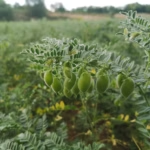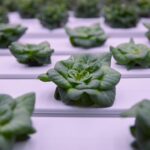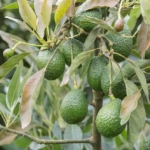Utilizing green energy sources for sustainable farming operations is an excellent way to reduce the environmental impact of agriculture and promote a more sustainable future. Here are several key green energy sources that can be utilized in farming operations:
- Solar Power: Solar energy is one of the most popular and accessible green energy sources for farms. Installing solar panels on rooftops, barns, or open fields can generate electricity to power various farming operations, such as lighting, irrigation systems, and machinery. Excess energy can also be stored in batteries or fed back into the grid.
- Wind Power: Farms located in areas with consistent wind patterns can harness wind energy through wind turbines. Wind power can be used to generate electricity for farm operations, and surplus energy can be stored or sold back to the grid. Wind turbines are typically installed on higher ground or in open areas to maximize their effectiveness.
- Biomass Energy: Biomass energy utilizes organic materials, such as crop residues, manure, or dedicated energy crops, to produce heat or electricity. Biomass can be burned directly or converted into biogas through anaerobic digestion. The resulting energy can be used for heating, running generators, or even producing biofuels for farm machinery.
- Geothermal Energy: Farms located in regions with geothermal resources can utilize geothermal energy for heating and cooling purposes. Geothermal heat pumps can regulate the temperature of greenhouses, livestock buildings, and other farm facilities, reducing the need for conventional heating and cooling systems.
- Hydropower: Farms situated near rivers or streams with flowing water can harness hydropower. Small-scale hydropower systems, such as waterwheels or micro-hydro turbines, can generate electricity to power farm operations. Hydropower is particularly useful for farms requiring a consistent and reliable energy source.
- Biogas from Anaerobic Digestion: Organic waste, such as crop residues, animal manure, and food waste, can be processed through anaerobic digestion to produce biogas. Biogas, primarily composed of methane, can be used for cooking, heating, or generating electricity. The byproduct of anaerobic digestion, known as digestate, can also be used as a nutrient-rich fertilizer.
- Energy Efficiency and Conservation: Alongside utilizing green energy sources, implementing energy-efficient practices can significantly reduce overall energy consumption on farms. This can involve using energy-efficient machinery and equipment, optimizing irrigation systems, insulating buildings, and employing smart technologies for energy management.
By incorporating these green energy sources and adopting energy-efficient practices, farmers can reduce greenhouse gas emissions, decrease reliance on fossil fuels, lower energy costs, and contribute to a more sustainable agricultural sector. Government incentives, grants, and partnerships with renewable energy providers can often help offset the initial costs of implementing these green energy solutions.









